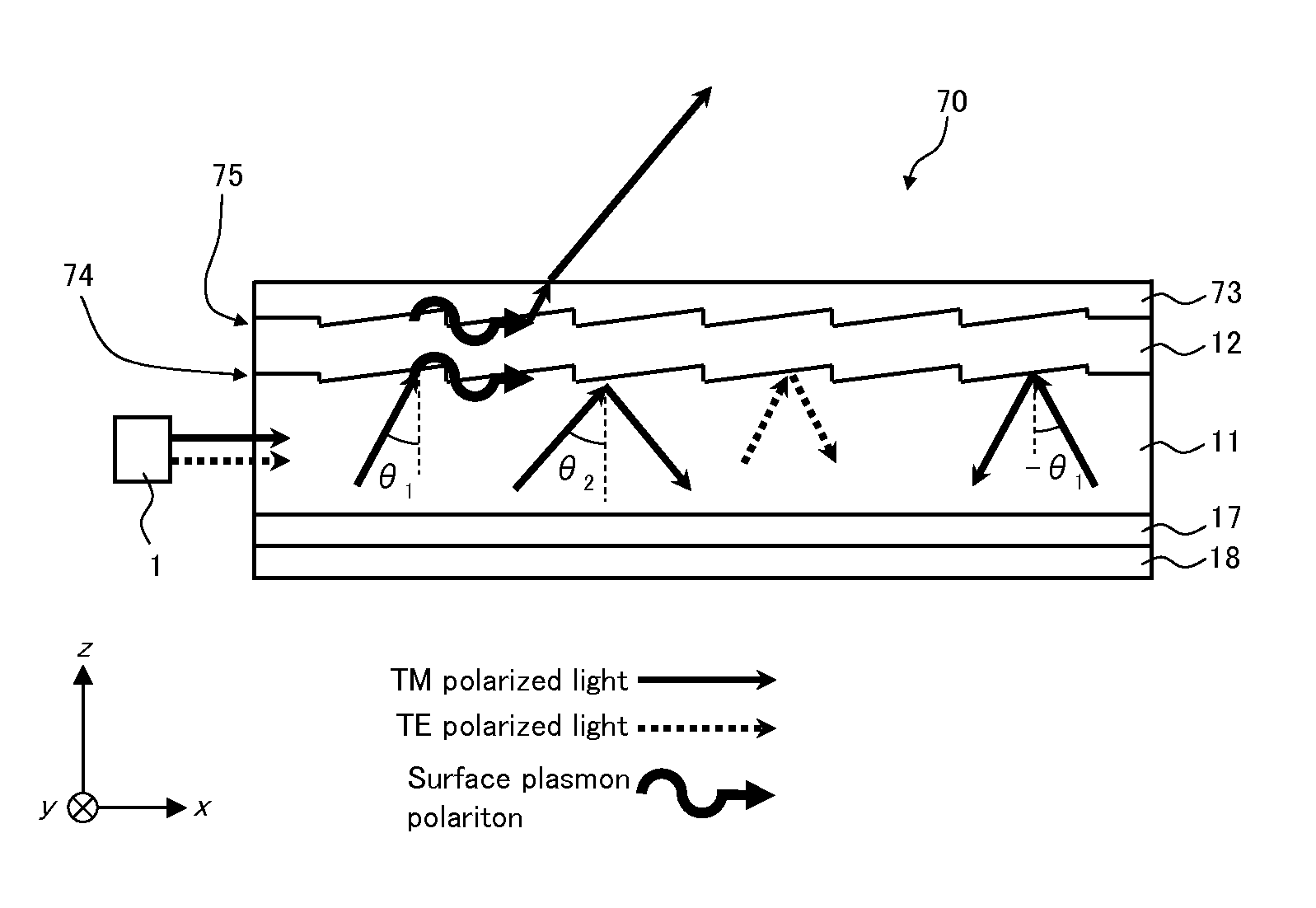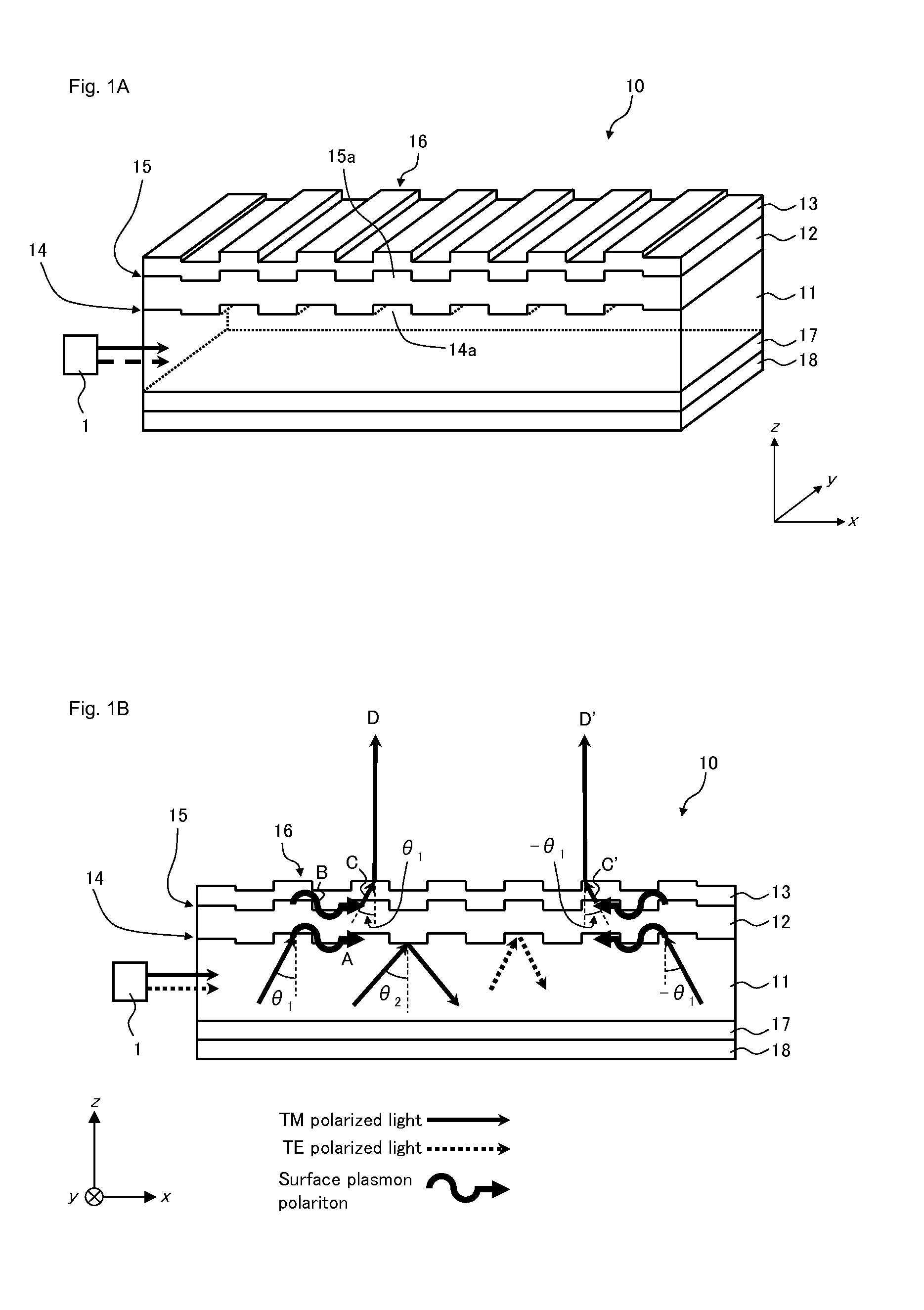Optical element, light source device, and projection display device
- Summary
- Abstract
- Description
- Claims
- Application Information
AI Technical Summary
Benefits of technology
Problems solved by technology
Method used
Image
Examples
first embodiment
[0031]FIGS. 1A and 1B schematically illustrate an optical element according to a first embodiment. FIG. 1A is a perspective view schematically illustrating the optical element according to this embodiment. FIG. 1B is a cross-sectional view schematically illustrating the optical element according to this embodiment, and shows a cross section taken along a propagation plane in which light propagates within a light guide body accompanied by multiple reflection. In the following description, as shown in FIGS. 1A and 1B, assume that a plane parallel to an upper surface of the light guide body, i.e. an exit surface of the optical element that outputs light is an xy plane, and assume that a direction orthogonal to the exit surface is a z direction. Similarly, assume that an entrance surface is a zx plane, assume that linearly polarized light having a polarization direction parallel to a y direction is a TE polarized light, and assume that a linearly polarized light having a polarization di...
second embodiment
[0067]FIG. 5 is a perspective view schematically illustrating an optical element according to a second embodiment.
[0068]Optical element 20 according to this embodiment is a modification to optical element 10 according to the first embodiment in which a configuration of a light generation means is modified. The light generation means functions similarly to the first embodiment, but differs from the first embodiment in that the light generation means includes metal layer 22, cover layer 23, and low refractive index layer 29 inserted in the interface between them. In other words, in this embodiment, instead of second diffraction grating 15 according to the first embodiment, low refractive index layer 29 having a refractive index lower than that of cover layer 23 is provided in the interface between metal layer 22 and cover layer 23. Except for the above configuration, this embodiment is configured similarly to the first embodiment. In each of the embodiments described below, including ...
third embodiment
[0070]FIG. 6 is a perspective view schematically illustrating an optical element according to a third embodiment.
[0071]This embodiment, similarly to the second embodiment, is a modification to the first embodiment in which a configuration of a light generation means is modified, and differs in that metal layer 32 and cover layer 33 are configured differently from the above embodiments.
[0072]In optical element 30 according to this embodiment, cover layer 33 has a refractive index smaller than that of light guide body 11, and metal layer 32 has a film thickness extremely smaller than that of cover layer 33. The light generation means thus configured, which includes metal layer 32 and cover layer 33, has a so-called “Kretschmann optical configuration”, and utilizes, similarly to the second embodiment, the ATR method to generate light from surface plasmon. Specifically, light is generated from surface plasmon that combines with surface plasmon in first diffraction grating 14 to be induc...
PUM
 Login to View More
Login to View More Abstract
Description
Claims
Application Information
 Login to View More
Login to View More - R&D
- Intellectual Property
- Life Sciences
- Materials
- Tech Scout
- Unparalleled Data Quality
- Higher Quality Content
- 60% Fewer Hallucinations
Browse by: Latest US Patents, China's latest patents, Technical Efficacy Thesaurus, Application Domain, Technology Topic, Popular Technical Reports.
© 2025 PatSnap. All rights reserved.Legal|Privacy policy|Modern Slavery Act Transparency Statement|Sitemap|About US| Contact US: help@patsnap.com



